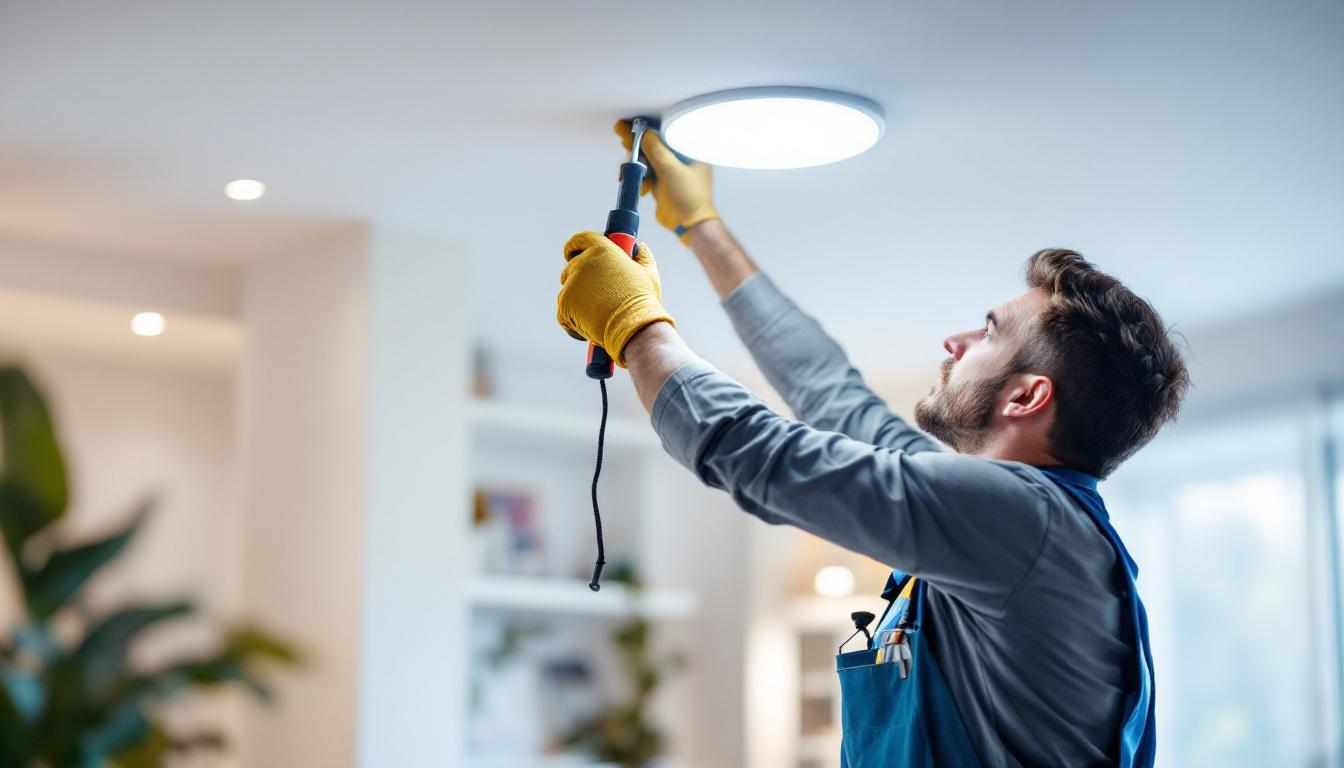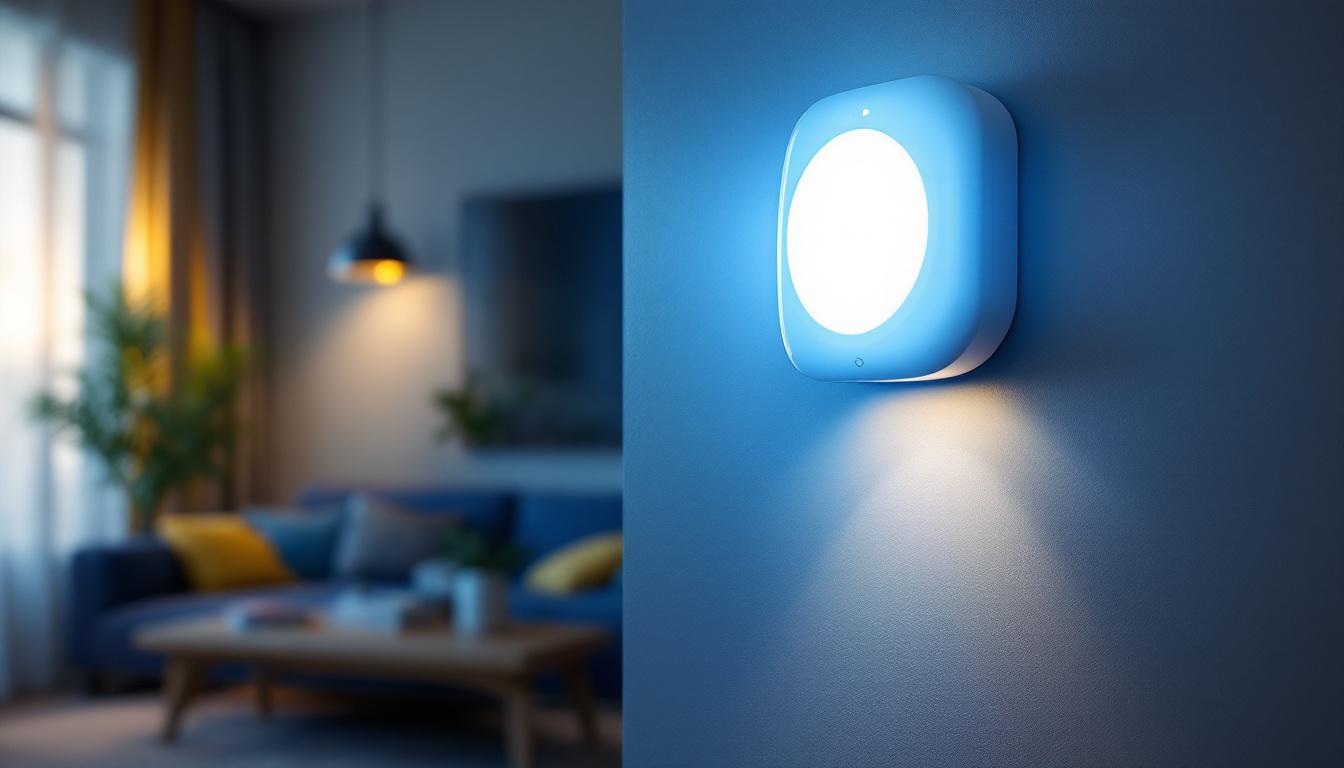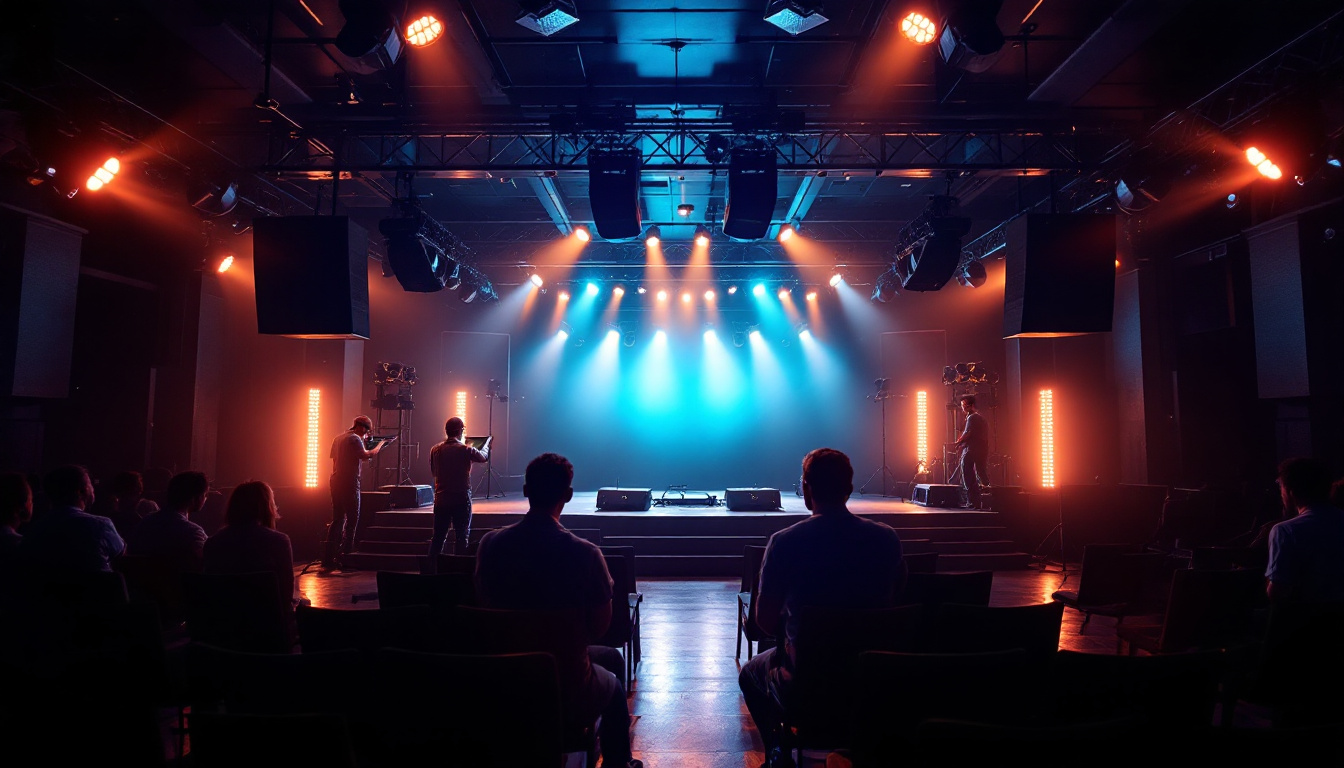
In recent years, the shift towards energy-efficient lighting solutions has gained significant momentum, especially in residential and commercial spaces. One of the most popular upgrades is converting recessed can lights to LED. This transition not only enhances the quality of light but also reduces energy consumption, leading to lower electricity bills and a smaller carbon footprint. The crisp, bright illumination provided by LED lights can transform the ambiance of a room, making spaces feel larger and more inviting. Additionally, LEDs have a longer lifespan compared to traditional incandescent bulbs, which means less frequent replacements and reduced waste.
However, despite the clear benefits, many lighting contractors encounter common pitfalls during this conversion process. Understanding these mistakes can help contractors deliver better results and improve customer satisfaction. For instance, one common error is failing to consider the compatibility of existing fixtures with LED technology. Not all recessed can lights are designed to accommodate LED bulbs, and using the wrong type can lead to flickering or even damage to the fixture. This article delves into the frequent errors made during the conversion of recessed can lights to LED, offering insights and solutions to avoid them. Furthermore, it is essential for contractors to stay updated on the latest LED technologies and trends, as advancements in this field are continually evolving, providing even more efficient and versatile lighting options.
Before diving into the common mistakes, it is essential to grasp the fundamentals of LED technology. LED, or Light Emitting Diode, is a semiconductor device that emits light when an electric current passes through it. Unlike traditional incandescent or fluorescent bulbs, LEDs are more energy-efficient and have a longer lifespan. This efficiency not only translates to lower energy bills but also contributes to reduced greenhouse gas emissions, making LEDs a more environmentally friendly lighting option. Additionally, the durability of LEDs means they are less likely to break compared to fragile incandescent bulbs, which can be particularly advantageous in high-traffic areas.
When converting recessed can lights, it is crucial to understand the different types of LED options available. These include LED bulbs that can replace existing incandescent bulbs, LED retrofit kits designed specifically for can lights, and integrated LED fixtures. Each option has its advantages and disadvantages, and knowing which one to choose can significantly impact the overall success of the project. For example, while LED retrofit kits may offer a straightforward installation process, integrated fixtures can provide a sleek, modern look and often come with built-in energy-saving features. Understanding these nuances can help homeowners and contractors make informed decisions that align with their aesthetic and functional needs.
One of the most common mistakes contractors make is selecting the wrong LED product for the application. Not all LEDs are created equal, and factors such as wattage, lumens, and color temperature play a vital role in achieving the desired lighting effect. The wattage of an LED does not directly correlate to brightness, which can be a common misconception. Instead, lumens measure the actual light output, and understanding this distinction is key to selecting the appropriate LED for any space.
For instance, using an LED bulb with a lower lumen output than the original incandescent bulb can result in insufficient lighting, leaving clients dissatisfied. Conversely, opting for an excessively bright LED can create an uncomfortable glare. Understanding the specific lighting needs of the space is crucial for making the right choice. Additionally, color temperature, measured in Kelvin, affects the ambiance of a room. Warmer tones (around 2700K) create a cozy atmosphere, while cooler tones (above 5000K) can enhance focus and productivity, making them ideal for workspaces. Therefore, contractors must consider both the functional and aesthetic aspects of lighting when selecting LED products.
Another frequent oversight is failing to check the compatibility of the LED product with existing fixtures. Not all recessed can lights are designed to accommodate LED bulbs or retrofit kits. Some fixtures may require specific types of LED products to function correctly, while others may not support the heat dissipation needs of LEDs. This is particularly important because improper installation can lead to reduced performance and even safety hazards.
Contractors should always verify the specifications of the existing fixtures and ensure that the chosen LED products are compatible. This step can prevent issues such as flickering lights, overheating, or even fixture damage. Furthermore, understanding the dimming capabilities of both the LED products and the existing fixtures is crucial, as not all LEDs are dimmable. Using incompatible dimmers can result in poor performance or even damage to the LED, leading to additional costs and frustration. By taking the time to assess compatibility, contractors can ensure a smoother installation process and a more satisfactory outcome for their clients.
Proper installation is critical to ensure the longevity and performance of LED lighting. Unfortunately, many contractors make installation errors that can compromise the effectiveness of the LED conversion.
One of the most significant mistakes is neglecting to read and follow the manufacturer’s instructions. Each LED product comes with specific guidelines regarding installation, wiring, and compatibility. Ignoring these instructions can lead to improper installation, which may void warranties or lead to safety hazards.
Contractors should take the time to familiarize themselves with the installation guidelines for each product they use. This practice not only ensures compliance but also enhances the overall quality of the installation.
Wiring is another critical aspect of LED installation that contractors must handle with care. Improper wiring can lead to flickering lights, reduced lifespan, or even electrical hazards. It is essential to ensure that the wiring is compatible with the LED products being installed.
Additionally, using the correct gauge of wire and ensuring secure connections can prevent future issues. Contractors should also be aware of the electrical load and ensure that the circuit can support the new LED fixtures without overloading.
Misunderstandings about LED technology can lead to poor decision-making during the conversion process. Addressing these misconceptions can help contractors make informed choices and provide better service to their clients.
While LEDs offer numerous benefits, they are not always the best choice for every situation. For example, in areas where the light is rarely used, such as storage rooms, traditional incandescent bulbs may still be more cost-effective. Understanding the specific needs of each space is vital for recommending the best lighting solution.
Contractors should evaluate the purpose of the lighting, the frequency of use, and the client’s budget before suggesting a complete LED conversion. This approach demonstrates professionalism and a commitment to providing tailored solutions.
Another common misconception is that all LED products perform similarly. In reality, there is a wide range of quality among LED manufacturers. Cheaper options may save money upfront but can lead to issues such as color inconsistency, flickering, or a shorter lifespan.
Contractors should prioritize quality over cost when selecting LED products. Researching reputable brands and understanding the differences in performance can help ensure a successful conversion and satisfied clients.
Effective communication with clients is essential during the LED conversion process. Many clients may have concerns or questions about the transition, and addressing these proactively can enhance trust and satisfaction.
One of the primary benefits of converting to LED lighting is energy savings. However, clients may not fully understand the extent of these savings or how they translate into lower utility bills. Contractors should take the time to explain the energy efficiency of LEDs compared to traditional lighting options.
Providing clients with estimates of potential savings can help them appreciate the value of the investment. Additionally, discussing the long lifespan of LEDs can further reinforce the benefits of the conversion.
Lighting is not just about functionality; it also impacts the aesthetics of a space. Clients may have specific preferences regarding color temperature and brightness, which can affect the overall ambiance. Contractors should engage in discussions about these preferences, providing samples or demonstrations if possible.
Understanding the client’s vision for the space can help contractors recommend the most suitable LED options, ensuring that the final result aligns with their expectations.
The relationship between contractors and clients does not end once the installation is complete. Following up after the project is essential for ensuring customer satisfaction and addressing any potential issues.
After the conversion, clients may have questions about maintaining their new LED lighting. Providing tips on how to care for their fixtures, such as cleaning and troubleshooting common issues, can enhance their experience and prolong the life of the installation.
Additionally, contractors can offer ongoing support or maintenance services, which can lead to repeat business and referrals. Establishing a reputation for excellent customer service can set a contractor apart from the competition.
Feedback is invaluable for contractors looking to improve their services. After the installation, reaching out to clients for their thoughts on the project can provide insights into areas for improvement.
Encouraging clients to share their experiences can also lead to positive testimonials and referrals. A satisfied client is often willing to recommend a contractor to friends, family, or colleagues, which can significantly boost business growth.
Converting recessed can lights to LED is a beneficial upgrade that can enhance energy efficiency and lighting quality. However, lighting contractors must be aware of the common mistakes that can occur during this process. By understanding the basics of LED technology, avoiding installation errors, addressing client concerns, and providing excellent post-installation support, contractors can ensure successful conversions and satisfied clients.
Ultimately, the goal is to deliver a lighting solution that meets the specific needs of each space while maximizing the benefits of LED technology. By avoiding common pitfalls and prioritizing quality and communication, lighting contractors can thrive in this evolving industry.
Ready to elevate your lighting installations and avoid common pitfalls? Choose LumenWholesale for your next project and experience the difference quality makes. Our spec-grade lighting products are designed to meet the needs of the most discerning contractors, offering exceptional performance at wholesale prices. Say goodbye to middleman markups and hello to a vast selection of reliable lighting solutions that will impress your clients and enhance any space. With free shipping on bulk orders, you can stock up on premium lighting without worrying about extra costs. Don’t compromise on quality or value—visit LumenWholesale today and secure the best in wholesale lighting at the best value.

Discover how motion light detectors are revolutionizing the lighting industry by enhancing energy efficiency, security, and convenience.

Discover the key factors that distinguish leading lighting contractors in the industry, focusing on the crucial role of foot candles in creating optimal lighting solutions.

Discover the preferred lighting choices for venues and explore the pros and cons for lighting contractors.

Discover the transformative advantages of cam lights for lighting contractors.